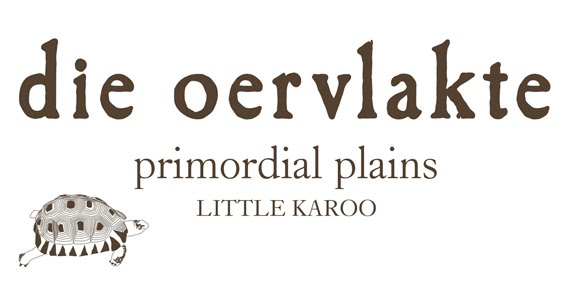Three geologists Peter Ginn, Paul Rixom and Colin Ralston, are making
this route a reality on
12th and on 26th May 2012 when they will conduct two separate geological tours based on the route identified by Dr. Chris Lee in
die oervlakte
book. The route will include de Rust, the Swartberg Mountains, the Outeniqua Mountains and on past the Kammanassie Mountains. It
has been arranged to gain access to the actual
oervlakte on one of the
farms in the area. It will be the farm that was used for the photography
of the book and the branding of
die oervlakte concept.
“
die oervlakte offers the traveller vistas of unsurpassed landscapes which are unique to the Cape Fold mountains and fertile valleys in all their splendour. Visitors have at their fingertips a range of environmental, geological, cultural and historical information. The different routes bring to life the ecology of the area, the ancient structure of the topography, the culture and the intriguing and sometimes tragic history of the people.
Standing on the Ancient African Surface, one is immediately aware that the surface is covered in pebbles of different sizes, patterns and colours. On closer inspection many appear to have been formed by eons of wind and water abrasions, some seem to be miniature conglomerates and others just pretty stones, but one is overwhelmed by the geological time of the place. Looking down the valley more hills with their thick duricrust tops can be seen, all capped at the same height – giving a glimpse into the millions of years of erosion, accumulation, sediments, dry periods and wet periods of this enchanted, magical place we call the Little Karoo.
 |
| Surface at the top covered with pebbles |
 |
| Formations on the road up to die oervlakte |
If one lingers a while, one meets a special traveller – we never know
where he comes from or where he is going, but he seems as old as
die oervlakte
itself. Beautiful patterns adorn his back and he imparts a feeling of
things primordial, things permanent and determined. He is either the
beautiful angulate, leopard or tent tortoise.”
die oervlakte team are delighted that so soon after the launch of the book, the first spin-off in the area is taking place and that the geology of these magnificent primordial plains will be explored by the public.
We thank the geologists and Wessa for their initiative and are delighted that the money will be going to a fund for conservation and education and that it will stimulate interest in this unique area.
For more information please contact Christine Ridge-Schnaufer
Tel 044 873 4203 | Fax 086 646 5458 | wessa-george@ist.co.za
 |
| Published in Die Burger 1 March, 2012 |


















